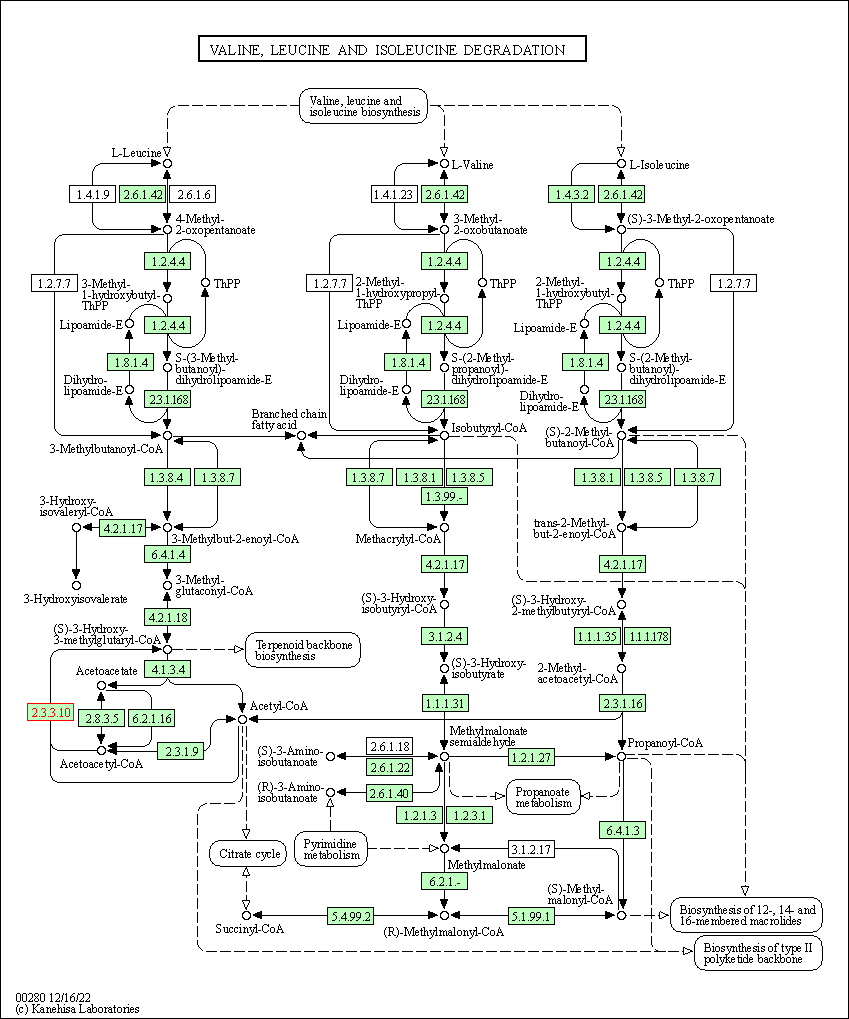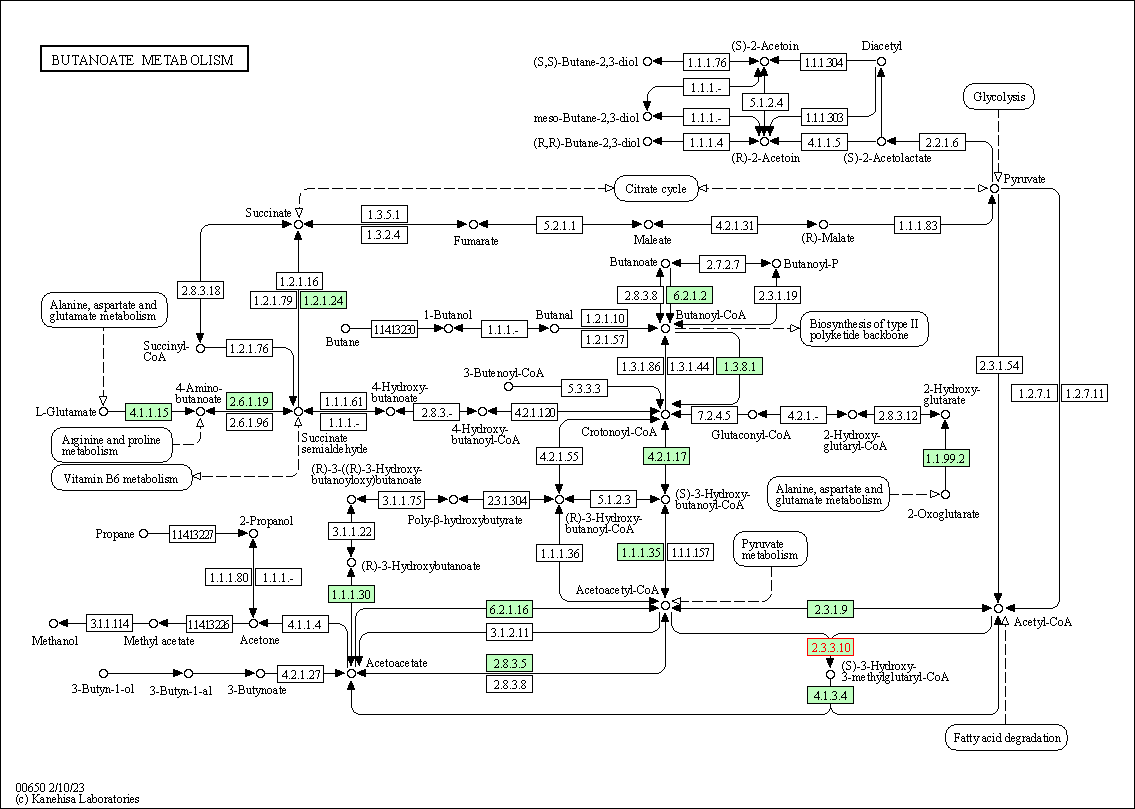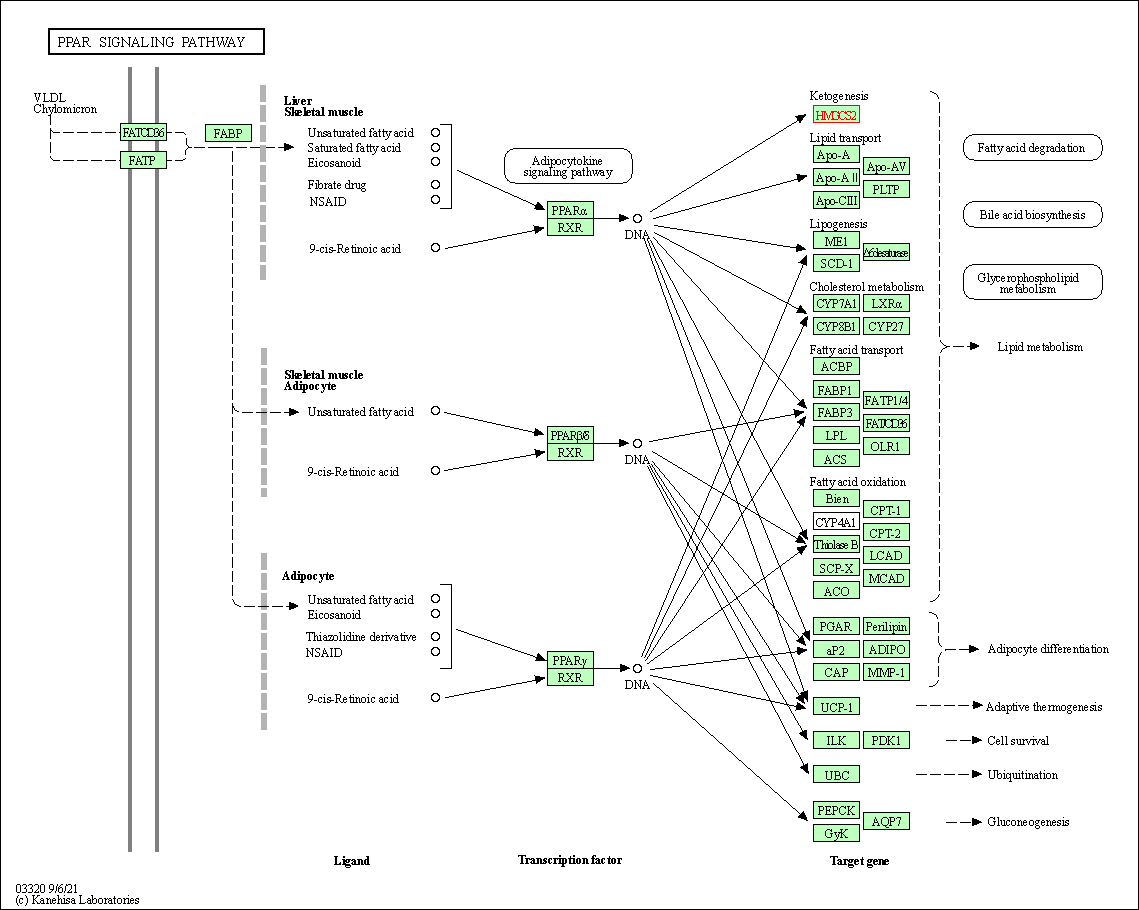Target Information
| Target General Information | Top | |||||
|---|---|---|---|---|---|---|
| Target ID |
T89082
(Former ID: TTDR00381)
|
|||||
| Target Name |
Hydroxymethylglutaryl-CoA synthase 2 (HMGCS2)
|
|||||
| Synonyms |
HMGCS2; HMG-CoAsynthase; 3-hydroxy-3-methylglutaryl coenzyme A synthase 2
Click to Show/Hide
|
|||||
| Gene Name |
HMGCS2
|
|||||
| Target Type |
Literature-reported target
|
[1] | ||||
| Function |
This enzyme condenses acetyl-CoA with acetoacetyl-CoA to form HMG-CoA, which is the substrate for HMG-CoA reductase.
Click to Show/Hide
|
|||||
| BioChemical Class |
Acyltransferase
|
|||||
| UniProt ID | ||||||
| EC Number |
EC 2.3.3.10
|
|||||
| Sequence |
MQRLLTPVKRILQLTRAVQETSLTPARLLPVAHQRFSTASAVPLAKTDTWPKDVGILALE
VYFPAQYVDQTDLEKYNNVEAGKYTVGLGQTRMGFCSVQEDINSLCLTVVQRLMERIQLP WDSVGRLEVGTETIIDKSKAVKTVLMELFQDSGNTDIEGIDTTNACYGGTASLFNAANWM ESSSWDGRYAMVVCGDIAVYPSGNARPTGGAGAVAMLIGPKAPLALERGLRGTHMENVYD FYKPNLASEYPIVDGKLSIQCYLRALDRCYTSYRKKIQNQWKQAGSDRPFTLDDLQYMIF HTPFCKMVQKSLARLMFNDFLSASSDTQTSLYKGLEAFGGLKLEDTYTNKDLDKALLKAS QDMFDKKTKASLYLSTHNGNMYTSSLYGCLASLLSHHSAQELAGSRIGAFSYGSGLAASF FSFRVSQDAAPGSPLDKLVSSTSDLPKRLASRKCVSPEEFTEIMNQREQFYHKVNFSPPG DTNSLFPGTWYLERVDEQHRRKYARRPV Click to Show/Hide
|
|||||
| 3D Structure | Click to Show 3D Structure of This Target | PDB | ||||
| Cell-based Target Expression Variations | Top | |||||
|---|---|---|---|---|---|---|
| Cell-based Target Expression Variations | ||||||
| Drug Binding Sites of Target | Top | |||||
|---|---|---|---|---|---|---|
| Ligand Name: (S)-3-hydroxy-3-methylglutaryl-CoA | Ligand Info | |||||
| Structure Description | CRYSTAL STRUCTURE OF HUMAN MITOCHONDRIAL 3-HYDROXY-3-METHYLGLUTARYL- COENZYME A SYNTHASE 2 (HMGCS2) | PDB:2WYA | ||||
| Method | X-ray diffraction | Resolution | 1.70 Å | Mutation | No | [2] |
| PDB Sequence |
SMPKDVGILA
58 LEVYFPAQYV68 DQTDLEKYNN78 VEAGKYTVGL88 GQTRMGFCSV98 QEDINSLCLT 108 VVQRLMERIQ118 LPWDSVGRLE128 VGTETIIDKS138 KAVKTVLMEL148 FQDSGNTDIE 158 GIDTTNACYG168 GTASLFNAAN178 WMESSSWDGR188 YAMVVCGDIA198 VYPSGNARPT 208 GGAGAVAMLI218 GPKAPLALER228 GLRGTHMENV238 YDFYKPNLAS248 EYPIVDGKLS 258 IQCYLRALDR268 CYTSYRKKIQ278 NQWKQAGSDR288 PFTLDDLQYM298 IFHTPFCKMV 308 QKSLARLMFN318 DFLSASSDTQ328 TSLYKGLEAF338 GGLKLEDTYT348 NKDLDKALLK 358 ASQDMFDKKT368 KASLYLSTHN378 GNMYTSSLYG388 CLASLLSHHS398 AQELAGSRIG 408 AFSYGSGLAA418 SFFSFRVSQD428 AAPGSPLDKL438 VSSTSDLPKR448 LASRKCVSPE 458 EFTEIMNQRE468 QFYHKVNFSP478 PGDTNSLFPG488 TWYLERVDEQ498 HRRKYARRPV 508
|
|||||
|
|
GLU80
3.074
ALA81
3.170
GLY82
3.506
LYS83
3.432
VAL86
3.758
GLY87
3.274
LEU88
4.308
GLU132
2.339
ALA165
3.152
CYS166
3.037
TYR200
3.656
ASN204
2.740
ALA205
3.520
THR208
3.245
ASP240
4.708
PHE241
3.243
VAL253
3.832
|
|||||
| Click to View More Binding Site Information of This Target with Different Ligands | ||||||
| Different Human System Profiles of Target | Top |
|---|---|
|
Human Similarity Proteins
of target is determined by comparing the sequence similarity of all human proteins with the target based on BLAST. The similarity proteins for a target are defined as the proteins with E-value < 0.005 and outside the protein families of the target.
A target that has fewer human similarity proteins outside its family is commonly regarded to possess a greater capacity to avoid undesired interactions and thus increase the possibility of finding successful drugs
(Brief Bioinform, 21: 649-662, 2020).
Human Tissue Distribution
of target is determined from a proteomics study that quantified more than 12,000 genes across 32 normal human tissues. Tissue Specificity (TS) score was used to define the enrichment of target across tissues.
The distribution of targets among different tissues or organs need to be taken into consideration when assessing the target druggability, as it is generally accepted that the wider the target distribution, the greater the concern over potential adverse effects
(Nat Rev Drug Discov, 20: 64-81, 2021).
Human Pathway Affiliation
of target is determined by the life-essential pathways provided on KEGG database. The target-affiliated pathways were defined based on the following two criteria (a) the pathways of the studied target should be life-essential for both healthy individuals and patients, and (b) the studied target should occupy an upstream position in the pathways and therefore had the ability to regulate biological function.
Targets involved in a fewer pathways have greater likelihood to be successfully developed, while those associated with more human pathways increase the chance of undesirable interferences with other human processes
(Pharmacol Rev, 58: 259-279, 2006).
Biological Network Descriptors
of target is determined based on a human protein-protein interactions (PPI) network consisting of 9,309 proteins and 52,713 PPIs, which were with a high confidence score of ≥ 0.95 collected from STRING database.
The network properties of targets based on protein-protein interactions (PPIs) have been widely adopted for the assessment of target’s druggability. Proteins with high node degree tend to have a high impact on network function through multiple interactions, while proteins with high betweenness centrality are regarded to be central for communication in interaction networks and regulate the flow of signaling information
(Front Pharmacol, 9, 1245, 2018;
Curr Opin Struct Biol. 44:134-142, 2017).
Human Similarity Proteins
Human Tissue Distribution
Human Pathway Affiliation
Biological Network Descriptors
|
|
|
There is no similarity protein (E value < 0.005) for this target
|
|
Note:
If a protein has TS (tissue specficity) scores at least in one tissue >= 2.5, this protein is called tissue-enriched (including tissue-enriched-but-not-specific and tissue-specific). In the plots, the vertical lines are at thresholds 2.5 and 4.
|
| KEGG Pathway | Pathway ID | Affiliated Target | Pathway Map |
|---|---|---|---|
| Valine, leucine and isoleucine degradation | hsa00280 | Affiliated Target |

|
| Class: Metabolism => Amino acid metabolism | Pathway Hierarchy | ||
| Butanoate metabolism | hsa00650 | Affiliated Target |

|
| Class: Metabolism => Carbohydrate metabolism | Pathway Hierarchy | ||
| Terpenoid backbone biosynthesis | hsa00900 | Affiliated Target |

|
| Class: Metabolism => Metabolism of terpenoids and polyketides | Pathway Hierarchy | ||
| PPAR signaling pathway | hsa03320 | Affiliated Target |

|
| Class: Organismal Systems => Endocrine system | Pathway Hierarchy | ||
| Degree | 11 | Degree centrality | 1.18E-03 | Betweenness centrality | 8.41E-04 |
|---|---|---|---|---|---|
| Closeness centrality | 2.05E-01 | Radiality | 1.36E+01 | Clustering coefficient | 2.73E-01 |
| Neighborhood connectivity | 1.79E+01 | Topological coefficient | 1.55E-01 | Eccentricity | 11 |
| Download | Click to Download the Full PPI Network of This Target | ||||
| References | Top | |||||
|---|---|---|---|---|---|---|
| REF 1 | How many drug targets are there Nat Rev Drug Discov. 2006 Dec;5(12):993-6. | |||||
| REF 2 | Crystal structures of human HMG-CoA synthase isoforms provide insights into inherited ketogenesis disorders and inhibitor design. J Mol Biol. 2010 May 14;398(4):497-506. | |||||
If You Find Any Error in Data or Bug in Web Service, Please Kindly Report It to Dr. Zhou and Dr. Zhang.

